ADHD Accommodations
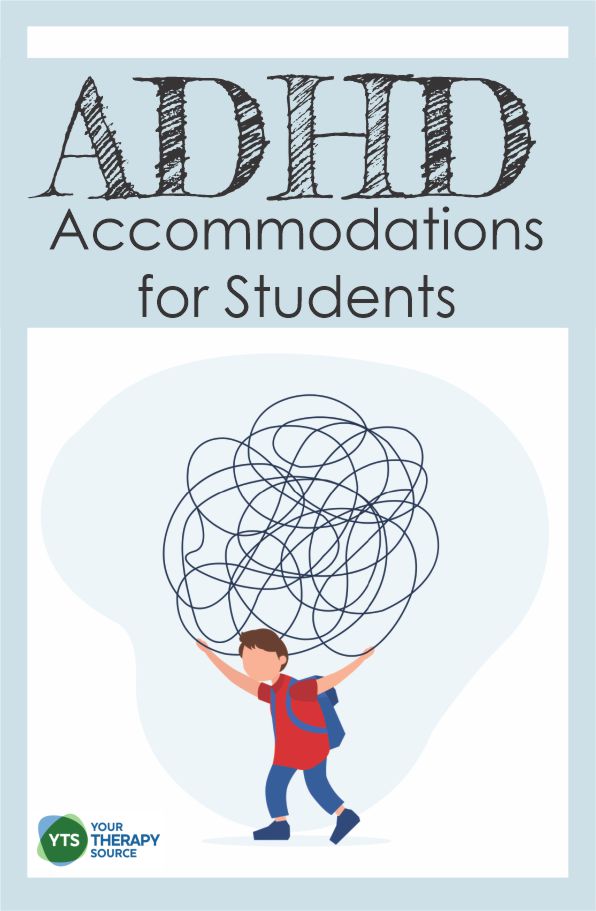
Attention Deficit Hyperactivity Disorder (ADHD) is a developmental disorder that is usually first diagnosed in childhood and often continues throughout adulthood. ADHD symptoms often include inattention, impulsiveness, and hyperactivity. Consequently, these symptoms often interfere with a child’s ability to learn in the classroom, and ADHD accommodations are needed so the child can successfully reach their potential at school.
Children with symptoms of inattention are often easily distracted, demonstrate decreased listening skills, and attempt to avoid classroom work. Symptoms of hyperactivity and impulsiveness include fidgeting or always getting up from a chair, difficulty participating in quiet activities, interrupting conversations, or talking excessively in. If children are provided with accommodations to learn to reduce obstacles, then they can achieve academic success in school.
WHAT ARE ACCOMMODATIONS?
Accommodations can make a difference in how a student learns in the classroom. Accommodations do not change what the student is learning, accommodations change only how the student learns the material. This gives a student with a disability an opportunity for success to complete their best work by giving equal access to learning in the general education curriculum like their peers.
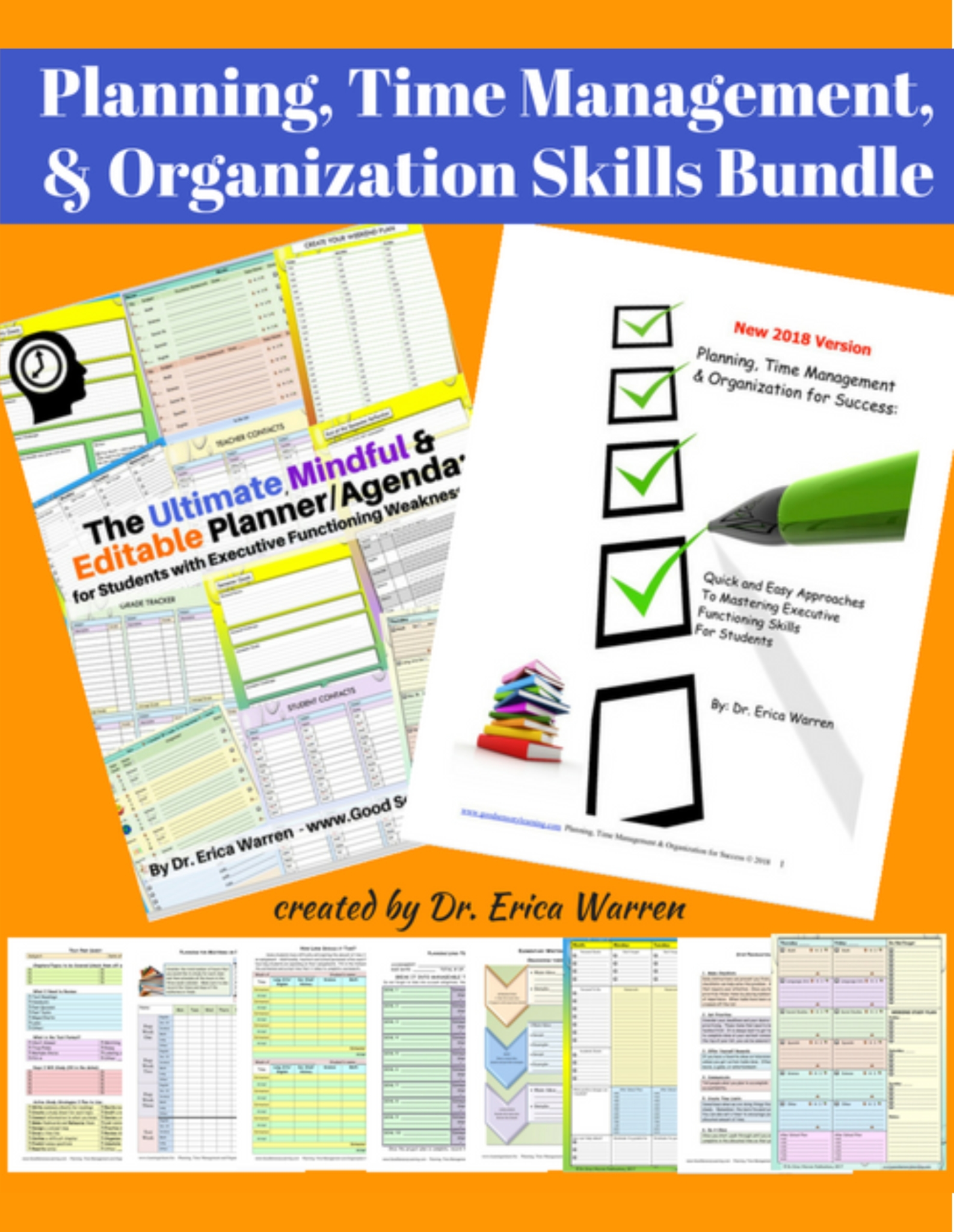
Planning, Time Management, and Organization Skills Bundle
WHAT TYPE OF ACCOMMODATIONS DO ADHD STUDENTS NEED?
Students diagnosed with ADHD may be disorganized at their desks or forget important details in their classroom work. They are easily distracted or cannot focus which results in poor time management skills in the classroom. Each student may require different accommodations based on age, grade level, and needs. Accommodations for ADHD students can be classified into presentation/organization, response, environmental, and time.
PRESENTATION AND ORGANIZATIONAL ACCOMMODATIONS
Presentation and organizational accommodations change the way information is presented to the student in the classroom. This may include providing the student with highlighted text in a book or an audiobook. Organizational accommodations may include presenting the student with premade outlines, study guides, graphic organizers, or a visual schedule to follow throughout the school day.
RESPONSE ACCOMMODATIONS
Response accommodations change the way the student responds to completing classroom work. For example, a student may verbally tell a teacher the answers to a test instead of completing the test in a written format. On the other hand, a student may use technology to translate voice to text during classroom assignments.
ENVIRONMENTAL ACCOMMODATIONS
Environmental accommodations change the classroom environment the student is working. A student may take a test in a different classroom with fewer distractions or use a fidget toy or an alternative seat (i.e. bouncy ball, wobble chair) to complete seated work. Accommodations to the environment can also include changing lighting or noise levels throughout the classroom.
TIMING ACCOMMODATIONS
Timing accommodations change the schedule or timing of the learning environment. For instance, a student with ADHD may receive more time to complete a test or classroom assignment. Likewise, a student may be allowed more frequent rest breaks during activities. With students who have ADHD, schedules and routines are very important to keep them on track throughout the school day.
WHAT ARE COMMON 504 ACCOMMODATIONS FOR ADHD?
Under 504 Accommodations, schools are required to provide reasonable accommodations to students at school with easy, low-cost changes to give the students the best chance of success in the classroom, without placing a burden on the school. Students diagnosed with ADHD usually participate in the general education curriculum and do not qualify for special education services. These students are eligible for 504 accommodations due to barriers that make learning difficult at school and can therefore benefit from extra help in the classroom. Read more about 504 Accommodations for ADHD.
ADHD ACCOMMODATIONS IN ELEMENTARY SCHOOL
Students learn best from demonstrations and hands-on activities in elementary school. Most accommodations in elementary school can be very beneficial for the entire classroom and not just for a student with ADHD. Below are accommodations that are very useful to help students learn in elementary school:
- flexible seating (i.e. wiggle chairs, standing desks, seat cushions, resistance bands on chair legs)
- desk organization (i.e. color-coded folders, baskets of school supplies)
- reward program or positive behavior chart
- picture calendar
- use academic planner
- sit students near a good role model
- fidget toys (i.e. fidget cube, squishy ball)
- body breaks (i.e. simple stretches, standing up from a seated position)
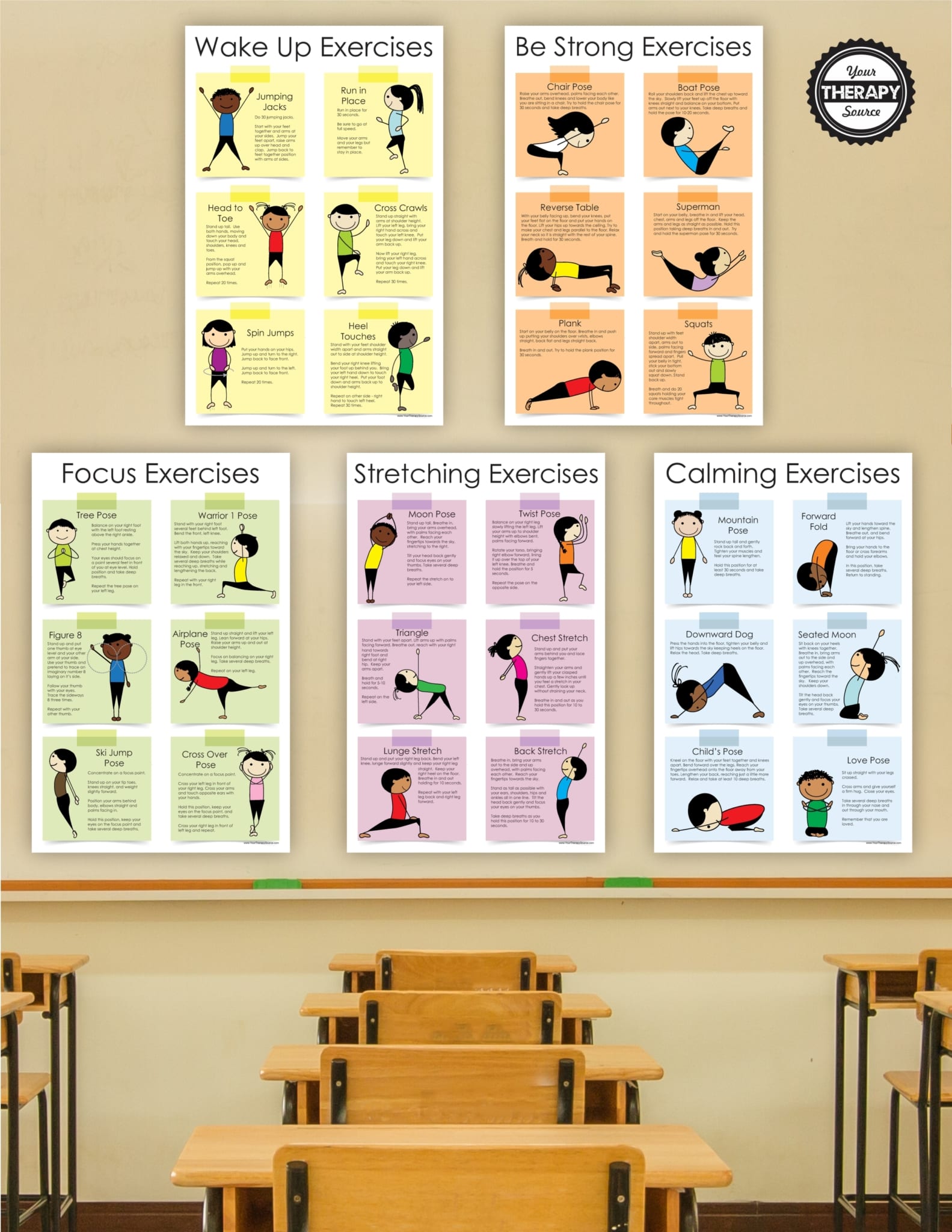
Exercise Posters for Kids – Printed
This is for the PRINTED version of the exercises posters for kids – Exercises for Classroom and Home. It includes 5 printed, full-color posters that are 11″ by 17″ to hang up in your classroom, home, hallway, or school gym. They are perfect for in-class brain breaks, self-regulation, physical activity and more!
This product is only shipped in the USA
The Exercise Posters for Kid…
ADHD ACCOMMODATIONS IN MIDDLE SCHOOL
Transitioning to middle school involves having more teachers and changing multiple classes a day with increased social challenges. Students now learn through auditory, visual, and hands-on instruction with an increased workload. Below are accommodations that are very useful to help students learn in middle school:
- sit student near the teacher.
- a quieter place to take tests
- breaks in between sections of work and tests
- tests with multiple choice or fill-in-blank instead of essay
- post a written schedule for daily routines and rules
- increase time to complete assigned work and tests
- shorten assignments
- use homework planner
- send daily and weekly progress reports home
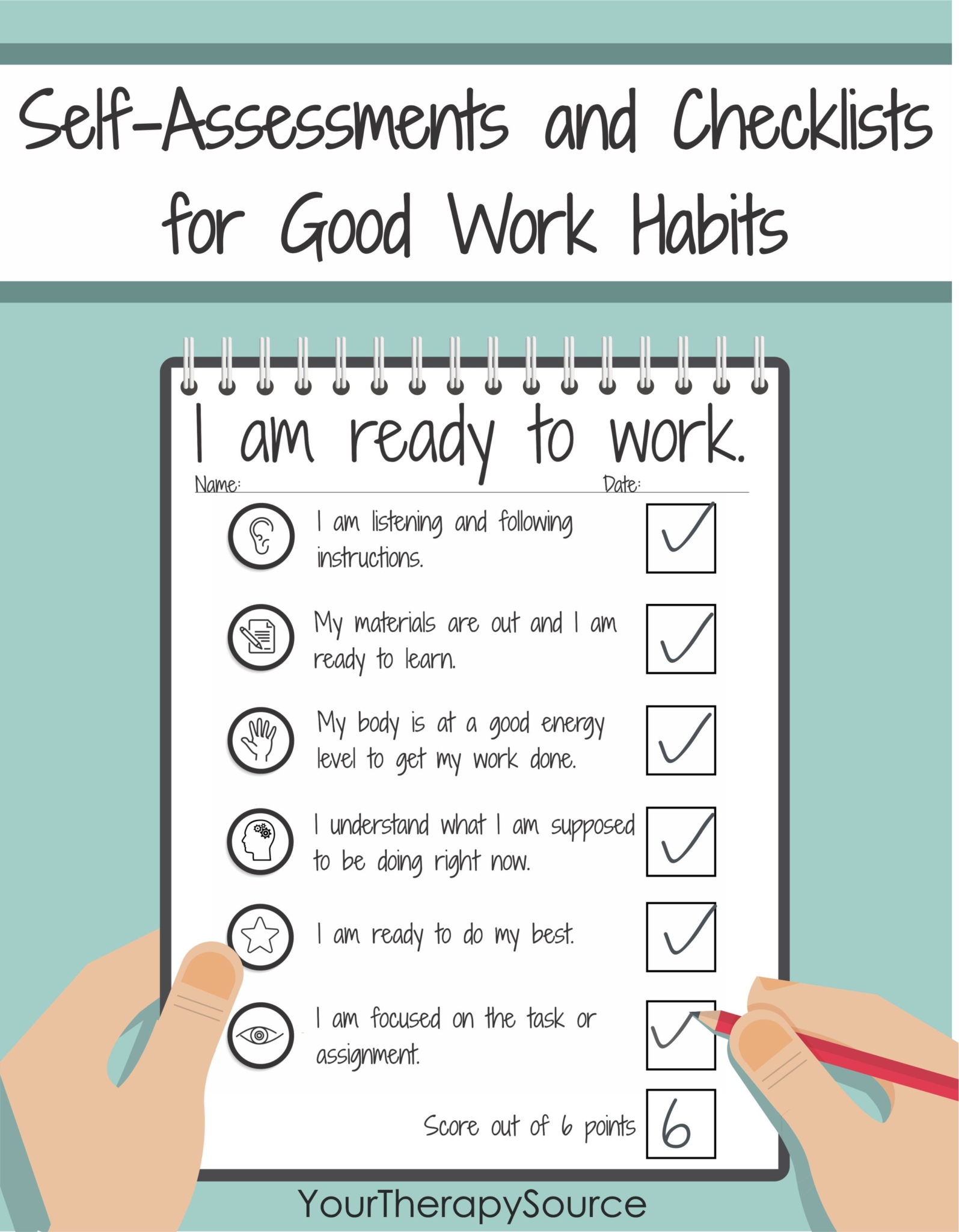
Self-Assessments and Checklists for Good Work Habits
ADHD ACCOMMODATIONS IN HIGH SCHOOL
Managing ADHD in high school can become more difficult with the increased demands of school and extracurricular activities. Below are accommodations that are very useful to help students learn in high school:
- extra set of books to keep at home
- verbal exams
- use a calculator
- tape record assignments
- checklists for keeping on task
- reduce course load and homework
- use of notes or outlines
- extra time to complete tests and homework
- quiet place to complete work
- use of computer and keyboard skills
- behavior contract
It is important to note, accommodations for students with ADHD have to fit the child so the child feels comfortable in the learning environment. Providing accommodations to students with ADHD will help these students keep pace with learning the same information as their peers. The result is very beneficial to all students succeeding and a very happy teacher and classroom!
RELATED POSTS
Accommodations vs Modifications – the difference between accommodations and modifications and how they are used in a school setting to make a student successful.
Accommodation in Special Education – how students succeed with accommodations in special education.
Accommodations for Students with Emotional and Behavioral Disorders – suggested accommodations that have worked with students who have emotional and behavioral disorders.
Extended Time for Tests and ADHD – effectiveness of ample time for tests for students with ADHD.
Toe Walking and ADHD – research on toe walking with children with ADHD.
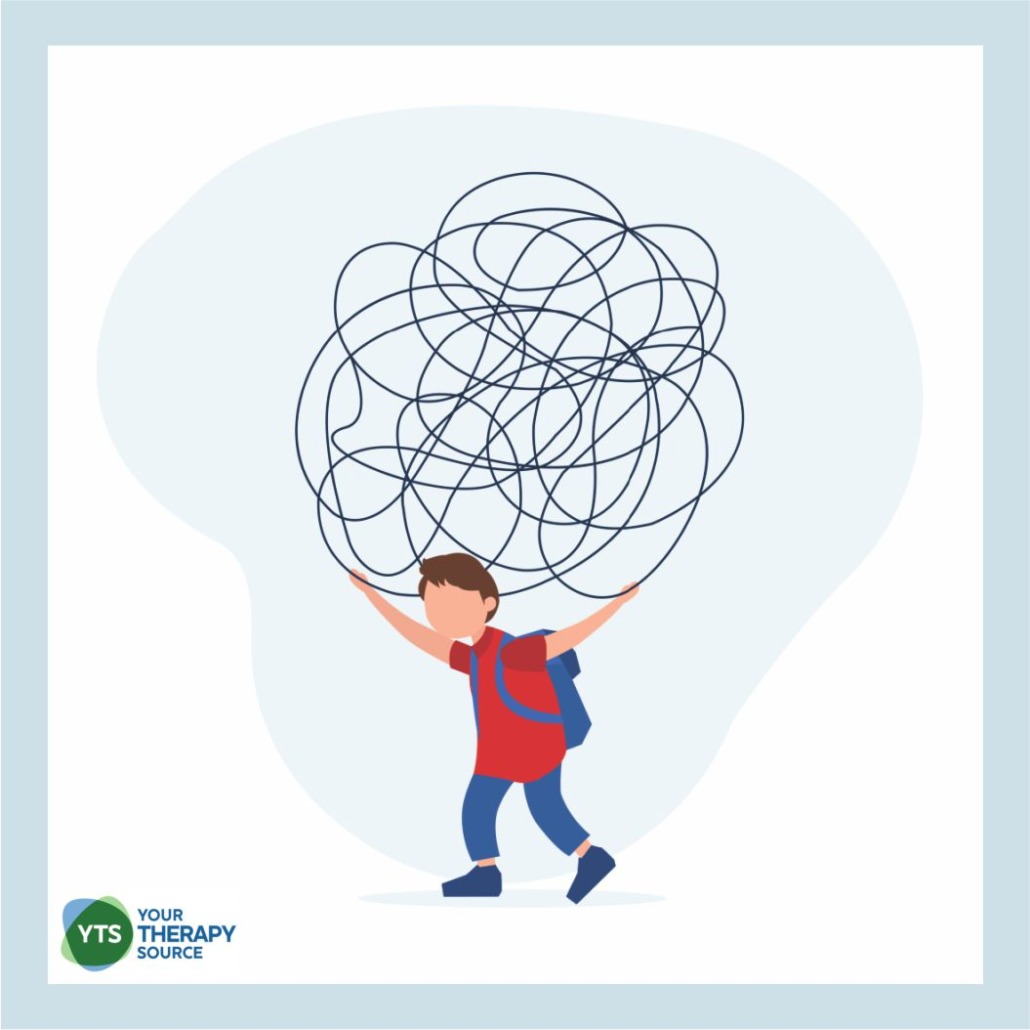
ARTICLE WRITTEN BY:
Kimberly Orlando, MOTR/L – Kimberly Orlando received her Master of Occupational Therapy from Chatham University in Pittsburgh, PA in 2001, and received her Level 1 Handwriting Specialist Certification through Handwriting Without Tears in 2012 in the areas of Pre-K Readiness, Printing, Cursive, and The Print Tool Evaluation. With 21 total years of experience as an Occupational Therapist, she has 6 years of experience providing services in hospital and home health care settings and 15 years of experience in early intervention and school settings (Pre-K through middle school levels). Kimberly also has experience tutoring children with fine motor and handwriting concerns.


